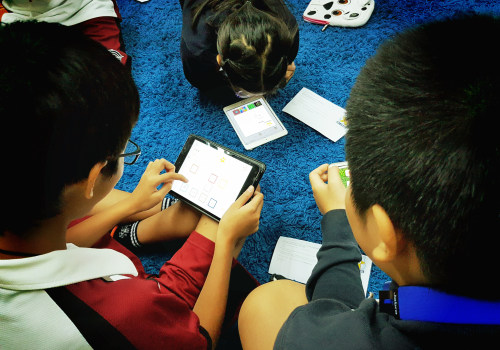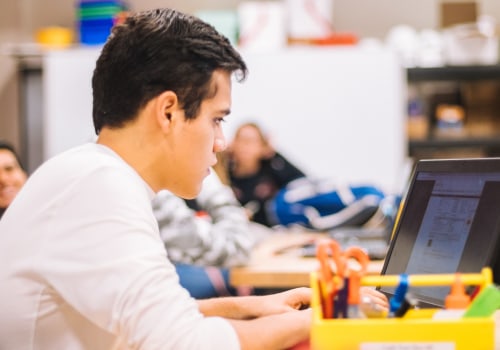Lesson Sequencing Strategies: A Comprehensive Overview
Effective lesson sequencing strategies are crucial for developing engaging and structured learning experiences that address diverse student needs. Techniques such as the 5E model—comprising Engage, Investigate, Explain, Elaborate, and Evaluate stages—promote critical thinking and participation. The spiral approach supports concept retention by revisiting topics throughout the curriculum. Differentiated instruction and scaffolding cater to varied learning styles, ensuring all students can access the material effectively. Incorporating formative assessments into the lesson plan allows teachers to adjust their methods based on student progress. Various strategies can deepen understanding and improve the application of effective lesson sequencing.
Key Points
- Thoughtful lesson sequencing enhances student engagement and supports structured learning experiences.
- The 5E Model offers a framework for engaging, investigating, and evaluating lesson effectiveness.
- Spiral approach revisits key concepts, reinforcing long-term comprehension and retention.
- Differentiation in lesson sequences addresses diverse learning styles and needs.
- Formative assessments within sequences monitor understanding and guide instructional adjustments.
The Role of Lesson Sequencing in Student Engagement
When lesson sequencing is thoughtfully designed, it plays a pivotal role in improving student engagement by creating a structured and coherent learning experience.
Effective teaching strategies, such as the 5E model, promote active participation and critical thinking, ensuring students remain interested and motivated. By anticipating difficulties and incorporating scaffolding, educators can maintain student curiosity, fostering connections between concepts.
Formative assessments embedded within lesson sequences allow teachers to monitor understanding, adapting instruction to boost achievement.
This deliberate approach not only improves engagement but also supports educators in serving their students more effectively, ensuring a supportive and dynamic educational environment.
Tailoring Lesson Sequences to Meet Diverse Student Needs
To effectively meet the diverse needs of students, lesson sequences must be thoughtfully tailored, taking into account the varied learning styles and abilities present in the classroom.
By differentiating instruction, educators can guarantee each lesson resonates with students' unique backgrounds, promoting equitable learning opportunities.
Utilizing formative assessments allows teachers to gauge understanding, making timely adjustments to support students' progress.
Scaffolding techniques, which build on prior knowledge, enable learners to tackle complex concepts with confidence.
Offering varied activities and resources further aids in engaging students at different levels, guaranteeing all learners receive the necessary support to thrive academically.
Exploring the Spiral Approach to Lesson Sequencing
Although lesson sequencing strategies can vary widely, the spiral approach stands out for its effectiveness in fostering long-term comprehension and retention. This method emphasizes revisiting key topics throughout the curriculum, enhancing students' understanding by connecting prior knowledge with new information.
By structuring lessons to build upon existing knowledge, educators facilitate critical thinking and practical application. Through repeated encounters, such as exploring the components of an animal cell in-depth, students develop stronger retention.
Continuous assessment within this sequence allows educators to adapt teaching strategies, serving learners by addressing their evolving comprehension and ensuring a cohesive educational journey.
Integrating the 5E Model Into Lesson Planning
Incorporating the 5E Model into lesson planning offers educators a structured framework that improves student engagement and learning outcomes.
This model, comprising Engage, Investigate, Explain, Elaborate, and Evaluate stages, fosters a thorough understanding of concepts. Engagement initiates curiosity, setting the stage for active participation.
During Investigation, students examine topics hands-on, enhancing inquiry-based learning. The Explain phase allows educators to clarify concepts while promoting discussion.
Elaborate encourages applying knowledge to new scenarios, deepening understanding. Finally, Evaluation helps assess comprehension and encourages self-reflection.
This structured approach supports critical thinking and empowers educators to effectively nurture students' intellectual growth.
Layered and Scaffolding Techniques for Effective Learning
Building on the structured framework of the 5E Model, educators can further refine lesson sequencing by employing layered and scaffolding techniques for effective learning. These methods start with foundational knowledge, gradually increasing complexity, allowing students to improve their understanding and skills.
| Phase | Description |
|---|---|
| Introduction | Introduce foundational concepts |
| Detailed Explanation | Provide in-depth examples and insights |
| Guided Practice | Implement hands-on activities to reinforce |
In teaching photosynthesis, for example, students first identify basic components, then engage in experiments to observe the process. This approach supports diverse learning needs, ensuring each student progresses at their own pace, fostering a deeper comprehension.
Enhancing Lesson Structure With Pre-Assessment Activities
Pre-assessment activities serve as a critical tool in lesson planning, offering educators valuable insights into students' prior knowledge and readiness.
By implementing these activities, teachers can tailor lesson plans to address individual learning needs, ensuring each student engages with material that is relevant and appropriately challenging.
Pre-assessment helps identify gaps in understanding, allowing educators to correct misconceptions before new concepts are introduced.
This approach not only guides instructional decisions but also improves the pacing and differentiation necessary for diverse learners.
Ultimately, incorporating pre-assessment activities fosters a cohesive learning experience, establishing a clear starting point for each student's educational journey.
Best Practices for Implementing Lesson Sequences
As educators refine lesson structures with pre-assessment activities, they naturally progress to contemplating the best practices for implementing effective lesson sequences. Each lesson should have a clear purpose, building on prior knowledge to guarantee a seamless learning journey.
Incorporating formative assessments throughout lessons allows educators to gauge comprehension and adapt teaching methods accordingly. Differentiation is crucial, with tailored lessons accommodating different learning styles and abilities, thereby fostering engagement.
A variety of activities targeting Multiple Intelligences can further improve engagement and learning outcomes. Allowing time for reviewing past material before introducing new concepts reinforces understanding and retention effectively.
Evaluating Student Progress Through Sequenced Lessons
Evaluating student progress through sequenced lessons is an integral aspect of effective teaching, providing educators with essential insights into student comprehension and development. Sequenced lessons offer ongoing assessment opportunities, enabling teachers to gauge understanding through formative assessments. The 5E model facilitates progress evaluation, with structured checkpoints for feedback. Pre-assessment activities illuminate prior knowledge, informing targeted evaluations. Regular revisits through a spiral approach reinforce retention, allowing cumulative assessments to highlight struggles. Diverse evaluation methods, including quizzes and peer assessments, foster thorough understanding and engagement.
| Evaluation Method | Purpose |
|---|---|
| Formative | Gauge understanding |
| 5E Model | Structured feedback |
| Pre-assessment | Identify prior knowledge |
| Spiral Approach | Reinforce retention |
| Quizzes | Thorough understanding |
Leveraging Technology and Resources in Lesson Sequencing
Incorporating technology and resources into lesson sequencing offers educators a powerful toolkit for enhancing student learning experiences.
Utilizing online platforms, such as educational videos and interactive simulations, provides diverse learning materials catering to various styles. Digital tools like learning management systems organize lesson plans and track student progress through formative assessments.
Multimedia presentations engage students by reinforcing concepts visually and auditorily. Online collaboration tools foster group work and peer feedback, promoting cooperative learning.
Resources like online quizzes and gamified learning apps reinforce knowledge retention, offering immediate feedback to evaluate understanding throughout the lesson sequence, ultimately supporting educators dedicated to serving their students effectively.
Professional Development and Lesson Sequencing Insights
Professional development plays an essential role in equipping educators with the skills and knowledge necessary for effective lesson sequencing. It emphasizes planning coherent learning arcs, which can greatly improve student engagement and achievement.
Participation in events like the Education Festival (Edfest) fosters the exchange of insights on lesson sequencing strategies. Differentiated lesson sequencing, addressing debates like "Teach to the top" versus "Teach to the core," is critical for meeting diverse needs.
Feedback and formative assessments are indispensable, allowing educators to reflect and assess student progress over time. Continuous improvement and collaboration among peers are encouraged through these initiatives.
Frequently Asked Questions
What Are the Lesson Sequencing Strategies?
Lesson sequencing strategies guarantee smooth shifts and coherence in teaching. Approaches include spiral, 5E model, layered, and scaffolding. They consider students' prior knowledge, utilize formative assessments, and adapt to diverse learning styles, enhancing engagement and understanding.
What Are the Strategies for Sequencing?
Sequencing strategies emphasize revisiting topics, fostering critical thinking, and gradually increasing complexity. Pre-assessment and differentiation address diverse needs, enhancing student engagement. Such strategies guarantee structured, coherent learning experiences, ultimately serving to maximize student achievement and understanding.
What Is the Sequencing Method in Teaching?
The sequencing method in teaching involves structuring lesson plans to build on existing knowledge, fostering a seamless learning experience. By anticipating challenges and organizing content logically, educators can better support student growth and improve overall classroom engagement.
Is Sequencing a Comprehension Strategy?
Sequencing is indeed a comprehension strategy. It helps learners make connections and understand ideas in a logical order, promoting deeper understanding and retention. This structured approach ultimately improves students' ability to serve and support others effectively.
Final Thoughts
In summary, effective lesson sequencing plays a vital role in improving student engagement and learning outcomes. By tailoring sequences to address diverse needs, educators can guarantee that all students benefit from the curriculum. Employing strategies like the spiral approach, the 5E model, and scaffolding techniques allows for a dynamic and supportive learning environment. Additionally, leveraging technology and ongoing professional development can improve lesson planning, guaranteeing educators remain adept at evaluating and adjusting sequences for ideal student progress.

Teach Science Online with Spires Online Tutors
Work with UK and international students across IGCSE, GCSE, A-Level, IB, AP, KS3, university, postgraduate, and admissions tutoring — including Oxbridge prep. Students for Biology, Chemistry, Physics, and all STEM subjects are looking for professional, experienced tutors.
Find Online Tutoring Jobs






